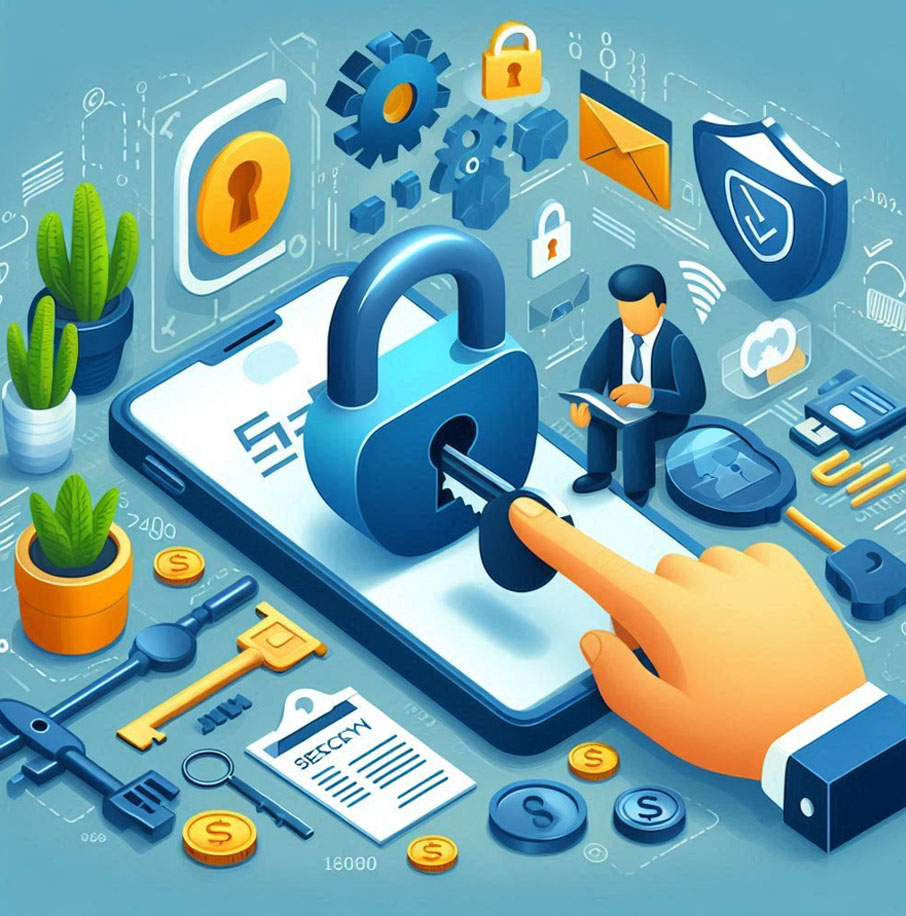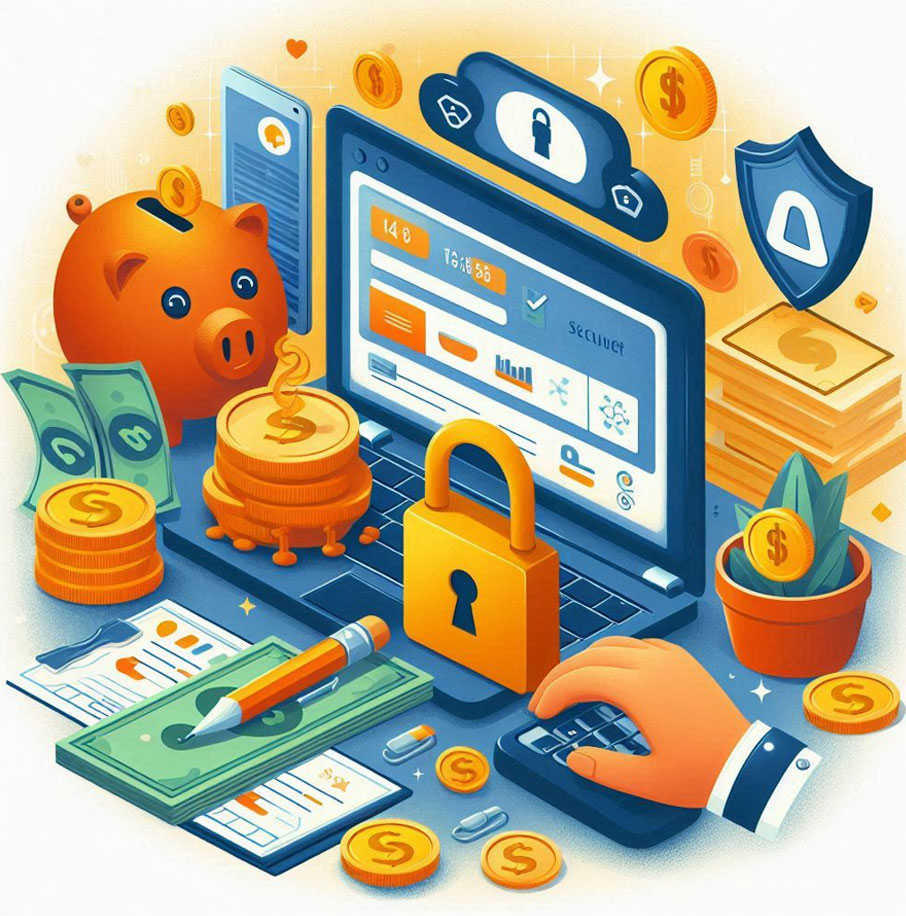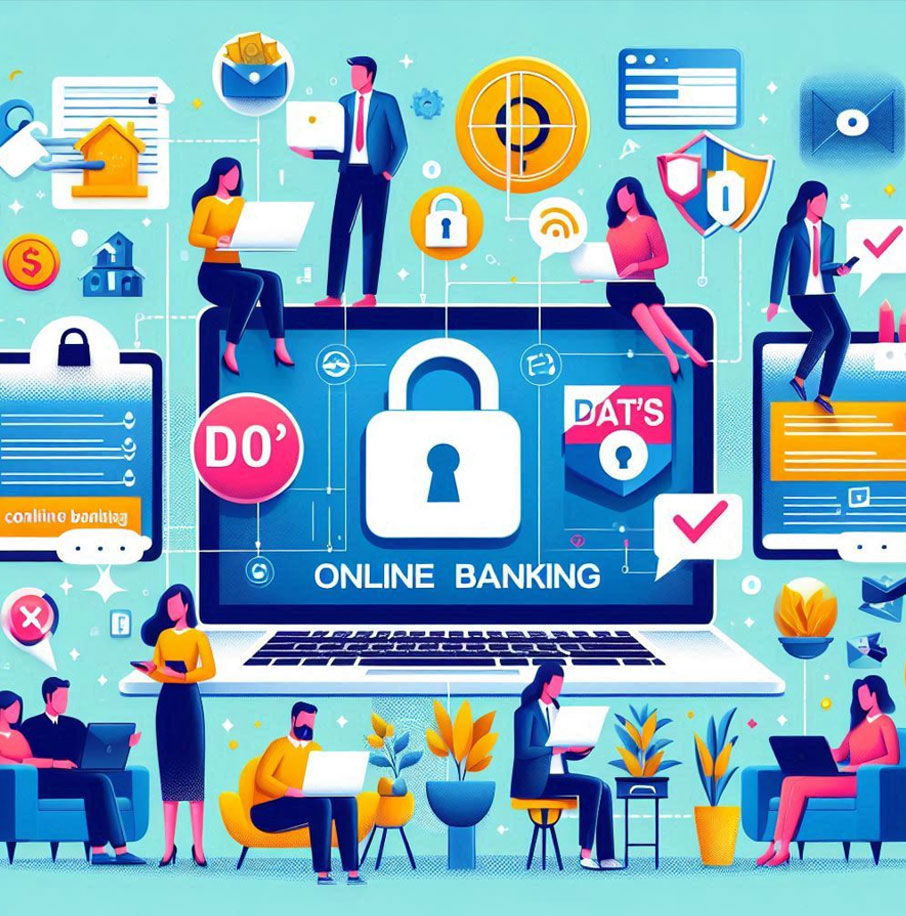Two-Factor Authentication & Why It’s a Must for Online Banking
Your Money, Your Control – 2FA Keeps Hackers Away!

Two-Factor Authentication
In today’s digital era, online banking has made financial transactions more convenient than ever. However, as online banking grows, so do cyber threats. Hackers and fraudsters constantly seek new ways to steal sensitive information and access bank accounts. One of the most effective ways to safeguard your account is by enabling Two-Factor Authentication (2FA). This additional security layer provides stronger protection against unauthorized access and online fraud. Let’s explore what 2FA is, how it works, and why it is essential for online banking security.
What Is Two-Factor Authentication (2FA)?
Two-Factor Authentication (2FA) is a security feature that requires users to verify their identity using two different forms of authentication before accessing their online bank account. Unlike traditional password-based login systems, 2FA adds an extra layer of protection, making it harder for hackers to gain access.
The two factors used in 2FA typically fall into these categories:
- Something You Know – A password or PIN.
- Something You Have – A smartphone, authentication app, or security token.
- Something You Are – Biometric verification, such as fingerprint or facial recognition.
By combining two of these elements, 2FA significantly enhances security and minimizes the risk of unauthorized access.
How Does 2FA Work?
When you enable 2FA for your online banking account, the login process involves multiple steps:
- Enter Your Password – You start by entering your usual banking username and password.
- Receive a Verification Code – A one-time password (OTP) is sent to your registered mobile number, email, or authentication app.
- Enter the Code – You input the OTP to complete the authentication process.
- Access Granted – Once the verification code is successfully entered, you gain access to your account.
This extra step ensures that even if a hacker obtains your password, they cannot log in without the second factor of authentication.
Why Is Two-Factor Authentication a Must for Online Banking?
1. Stronger Security Against Cyber Threats
With rising cybercrimes, relying on a password alone is no longer sufficient. Weak or stolen passwords are among the leading causes of online banking fraud. 2FA provides an added barrier, preventing hackers from easily accessing accounts even if they steal login credentials.
2. Protection Against Phishing Attacks
Cybercriminals often use phishing emails and fake websites to trick users into revealing their passwords. However, with 2FA enabled, even if a user unknowingly provides their password, the attacker will still need the second authentication factor, making it much harder to gain access.
3. Prevents Unauthorized Transactions
Many banks use 2FA not only for logging in but also for approving high-value transactions. This ensures that unauthorized transactions are blocked unless the legitimate account owner verifies them using an OTP or biometric verification.
4. Mitigates the Risk of Account Takeovers
Account takeovers occur when hackers gain control of a user’s banking account. 2FA minimizes this risk by ensuring that even if login credentials are compromised, unauthorized access is blocked without the second verification step.
5. Compliance with Banking Security Regulations
Financial institutions are required to follow strict security measures, including multi-factor authentication (MFA), to protect customer accounts. Enabling 2FA ensures compliance with banking security standards and reduces fraud risks.
Different Types of Two-Factor Authentication
Banks offer various 2FA methods to enhance security. Here are some of the most commonly used authentication factors:
1. SMS-Based OTPs
One of the most popular 2FA methods, one-time passwords (OTPs) sent via SMS, provides an extra layer of security. However, SMS-based authentication is vulnerable to SIM swapping attacks, where fraudsters hijack phone numbers to receive OTPs.
2. Authenticator Apps
Apps like Google Authenticator, Microsoft Authenticator, and Authy generate time-sensitive OTPs that are more secure than SMS-based authentication. These codes expire within seconds, reducing the risk of unauthorized access.
3. Biometric Authentication
Many banks now offer biometric authentication, such as fingerprint scanning, facial recognition, or retina scans. This method is highly secure and convenient, as it eliminates the need to remember passwords.
4. Security Tokens
Physical security tokens generate unique authentication codes for users to input when logging into their bank accounts. These tokens add an extra layer of security but require users to carry the device at all times.
5. Email Verification Codes
Some banks send verification codes to a user’s registered email, requiring them to enter the code before accessing their account. While effective, this method is not as secure as biometric authentication or authenticator apps.
How to Enable Two-Factor Authentication for Your Online Bank Account
Enabling 2FA is a simple process that varies depending on your bank. Here’s a general guide to setting it up:
- Log into Your Online Banking Account – Visit your bank’s website or mobile app.
- Go to Security Settings – Navigate to the security or authentication section.
- Enable Two-Factor Authentication – Select the preferred 2FA method (SMS, app-based, or biometric).
- Verify Your Identity – Follow the on-screen instructions to verify your phone number or authentication app.
- Save Backup Codes – Some banks provide backup codes in case you lose access to your 2FA device.
- Complete Setup – Once activated, your account will require 2FA for future logins and transactions.
Conclusion
Two-Factor Authentication (2FA) is a critical security measure that helps protect online banking accounts from fraud, phishing attacks, and unauthorized access. By requiring a second verification step, 2FA adds an extra layer of security, making it much harder for cybercriminals to compromise accounts. Given the increasing risks of cyber threats, enabling 2FA should be a top priority for anyone using online banking.
Don’t wait until it’s too late—activate Two-Factor Authentication today and safeguard your financial assets!




